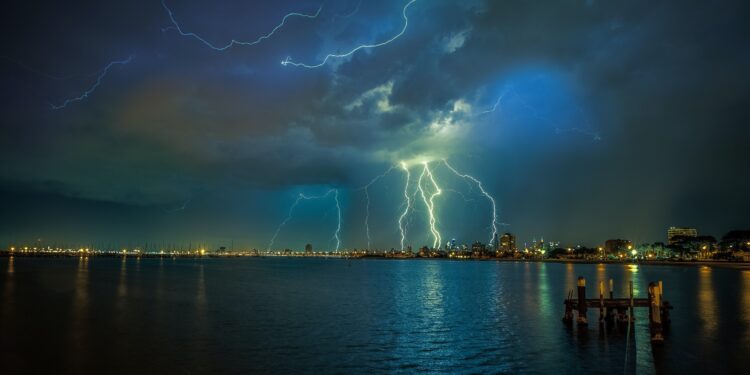Credit: Unsplash/CC0 Public Domain
Air pollution increases the severity of summer thunderstorms, according to a recent study by James Madison University researchers and published in the journal Atmospheric research.
Mace Bentley, a JMU geography professor and lead author of the study, explains: “Pollution acts like a cloud nucleus. It enters the cloud through the updraft; the updraft and downdraft then separate the pollution particles, which splits the electrical charges in the cloud and leads to increased lightning production.”
The three-year study examined nearly 200,000 thunderstorms in the Washington, D.C., area and more than 300,000 in the Kansas City area.
Using 12 years of lightning data from the National Lightning Detection Network and data from hundreds of air pollution stations in both cities, the researchers were able to determine that in environments with high instability, adding extra pollution increases cloud-to-ground lightning strikes, Bentley said.
Bentley is conducting similar research in Bangkok, a megacity that is more polluted than Washington, D.C., and Kansas City and has a warm, tropical climate. His results so far are similar, although lightning rates are even higher during those storms.
“It seems that wherever you go in the world, urban pollution is capable of making thunderstorms and lightning worse,” he said.
More information:
Mace Bentley et al., Toward disentangling thunderstorm-aerosol relationships: An observational study of regions centered on Washington, DC and Kansas City, MO, Atmospheric research (2024). DOI: 10.1016/j.atmosres.2024.107402
Provided by James Madison University
Quote:Three-year study suggests air pollution increases storm risk (2024, August 20) retrieved August 20, 2024 from
This document is subject to copyright. Apart from any fair dealing for the purpose of private study or research, no part may be reproduced without written permission. The content is provided for informational purposes only.



